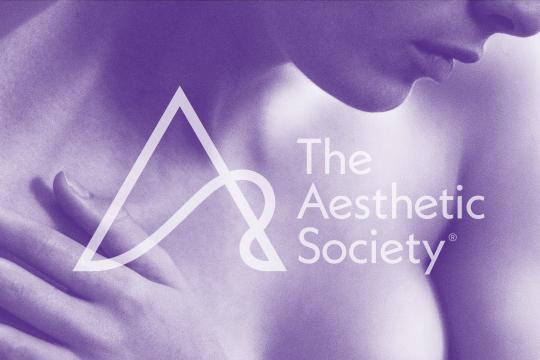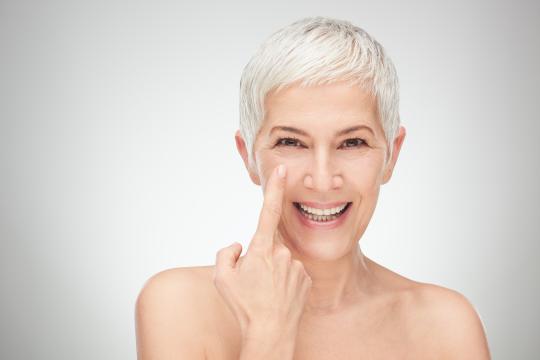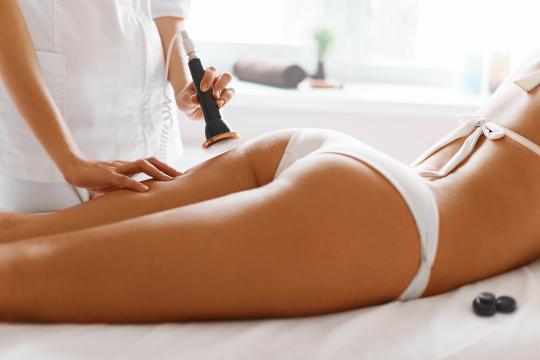
My Adventures with a Stubborn Keloid Scar
By Allison Schmidt
A keloid scar is basically the only time I think of collagen as a bad thing, because too much of it following an injury or a mole removal procedure, (in my case), can actually cause a scar that is raised and larger than the initial injury, which can also be itchy and painful.
I had a mole smack dab in the center of my chest for as long as I could remember. When I was a little kid it didn’t bother me, but growing up, through high school and college the older I got the bigger the mole looked in my eyes.
It was literally in the middle of my chest where there was no hiding it while wearing anything even remotely revealing.
So, I diligently applied my sunscreen every day and tried to keep things covered, but eventually the mole started showing some warning signs. It was changing texture and color, and although it hadn’t grown substantially, it was becoming more of a concern from an ‘I don’t want a cancerous mole’ angle instead of just not liking the overall aesthetics of it anymore.
Two doctor’s appointments later, I left the office with three stitches. I had a complete mole removal, so it was literally scooped out from my chest as opposed to just shaving it down or doing anything fancy with lasers. The tissue was sent off for testing and came back A-OK, which was great.
The problem arose shortly after I had the stitches removed and my scar started healing. It was pink and puffy, and eventually grew bigger than the mole ever was, so I was back where I started, with an unsightly problem on my chest again. As it turned out, the scar from removing the mole had turned into what is known as a keloid.
Both of my parents are prone to getting keloid scars, so I knew it was a possibility when I had the mole removed in the first place. But, due to me moving around and changing jobs and life getting in the way, I didn’t actually take any steps to treating the scar until well over a year after I had that mole removed.
My very first tip to you – is that when you see that your scar is not lying flat and healing properly, or you think it might be a keloid, go back to your doctor!
Unfortunately, I did not do that. I of course, tried home remedies initially. I tried treating the skin and the scar topically with daily doses of vitamin E oil, then a light glycolic acid toner, and finally I tried silicone scar sheets.
The scar sheets were the only thing that made even a little dent in the keloid scar. I wore them nearly around the clock, following the directions on the package for how long to apply the sheet and how to keep it clean. After wearing the scar sheets for a full two months, I didn’t feel there was a significant enough change.
Back to the doctor I went. Remember that tip about going to your doctor in the first place? That will save you a lot of time – and money!
My doctor started with cryotherapy and blasted the keloid with liquid nitrogen to keep it from spreading further and to help with the rather bright pink discoloration. She then gave me a steroid injection to reduce the physical size of the scar tissue. Healing time for the cryotherapy was maybe a week of just being careful to keep the area protected and keeping it clean. Eventually a scab formed, after which you just need to be careful not to touch it!
From what my doctor told me, you have to be very careful with how much of the steroid injection that is used to reduce the scar, because you can use too much and end up with a recessed scar that is actually inverted - in other words, the opposite of what you started with.
It has been just over a month after my first steroid injection, and my doctor believes it may take just one more injection to nip the thing in the bud. Compared to when I first started self-treating my scar, it is now significantly paler, less pink/red and angry looking, and is much more flat. It also used to be itchy which was bothersome, but time and treatments have brought an end to this as well.
There are a few other options for treating a keloid scar that I haven’t tried - there are laser treatments and there are also surgical procedures to physically remove the scar tissue itself. This happened to be the course I chose, which can largely depend on the nature of your own keloid scarring. Each is different, and certain scars respond better to different types of treatments.
I would recommend seeking out a board-certified plastic surgeon for a consult, especially before you waste money on home treatments that likely won’t accomplish much for these stubborn scars.




